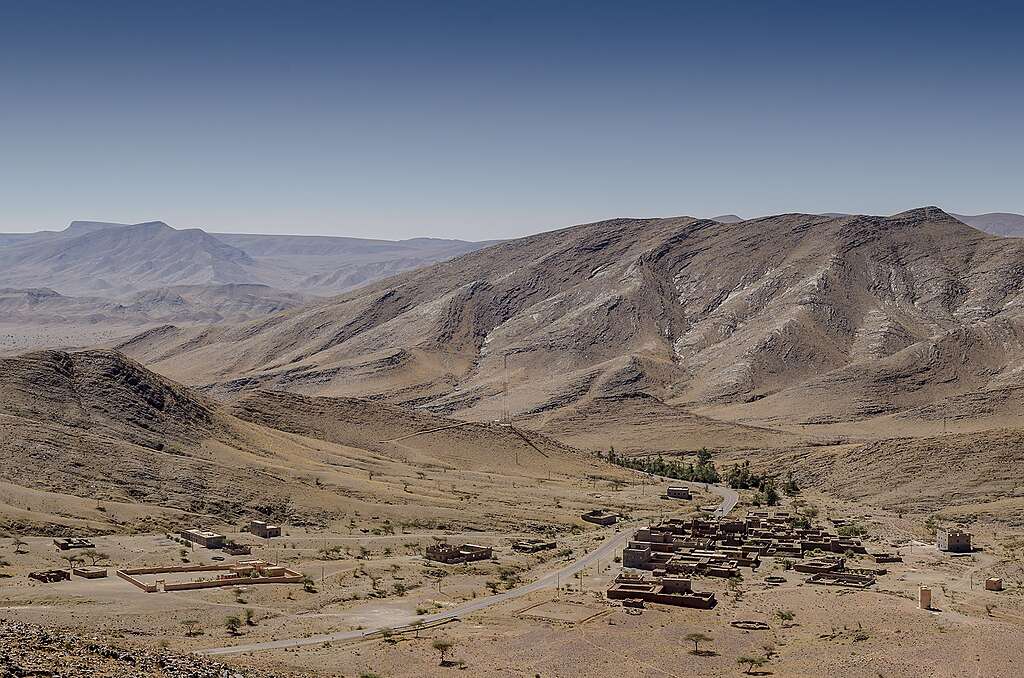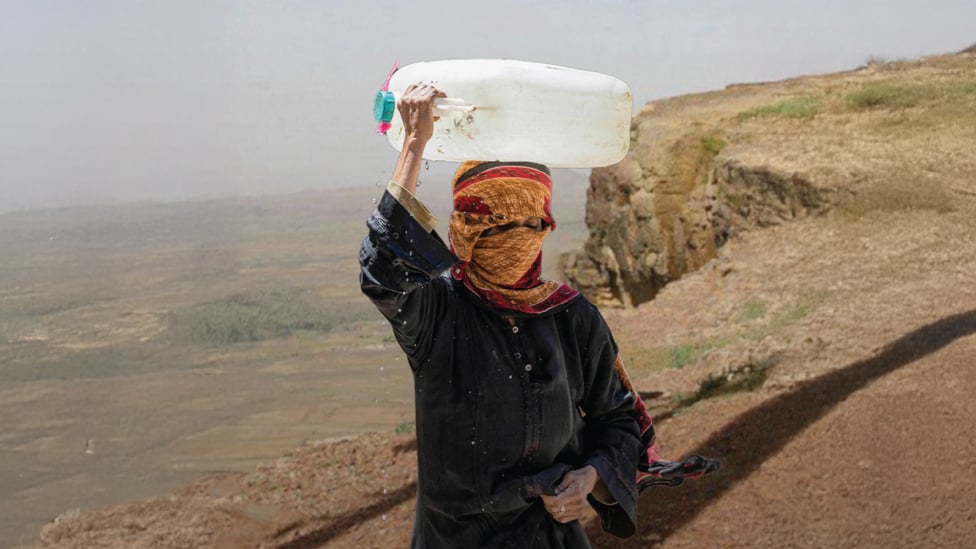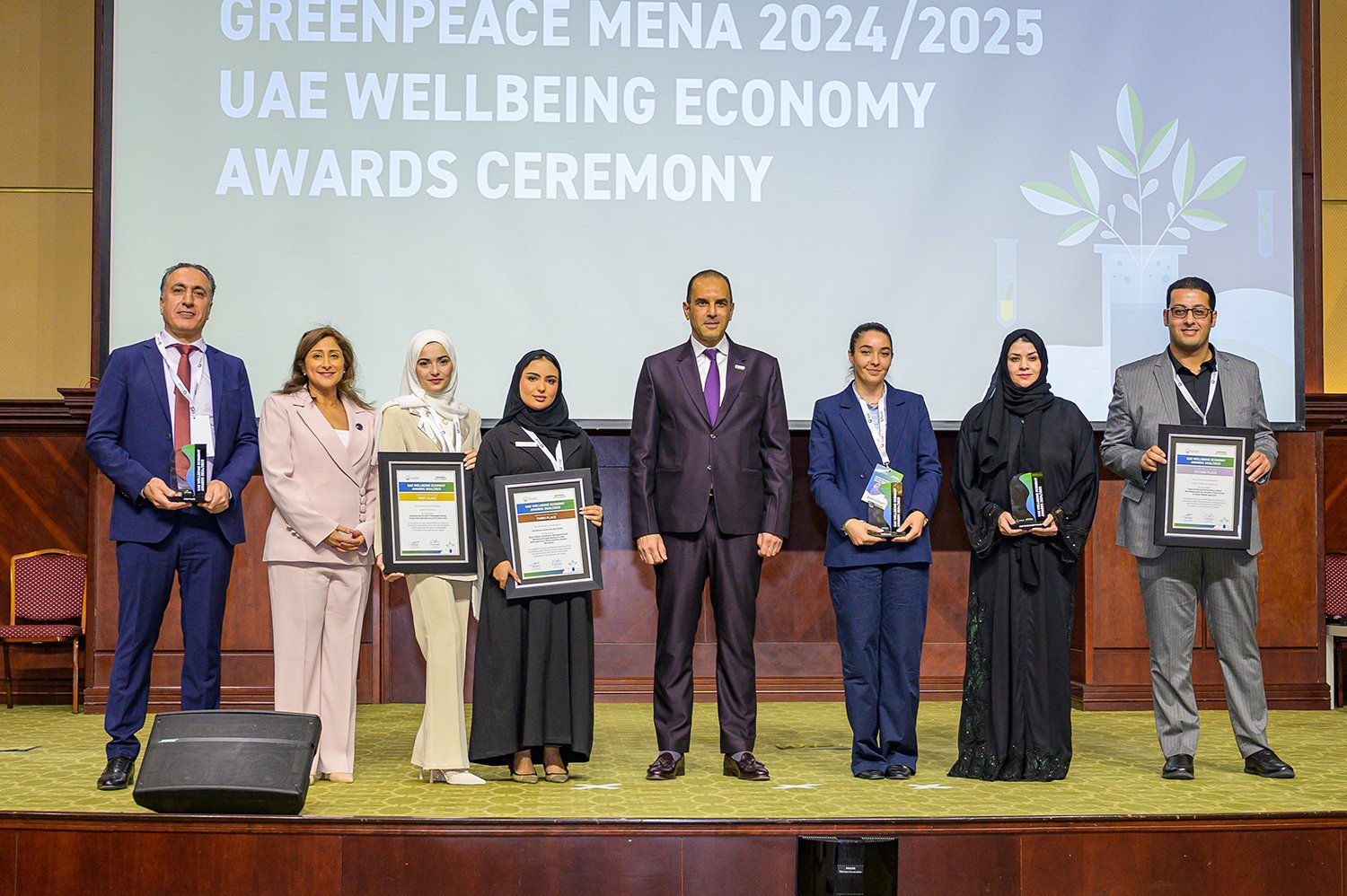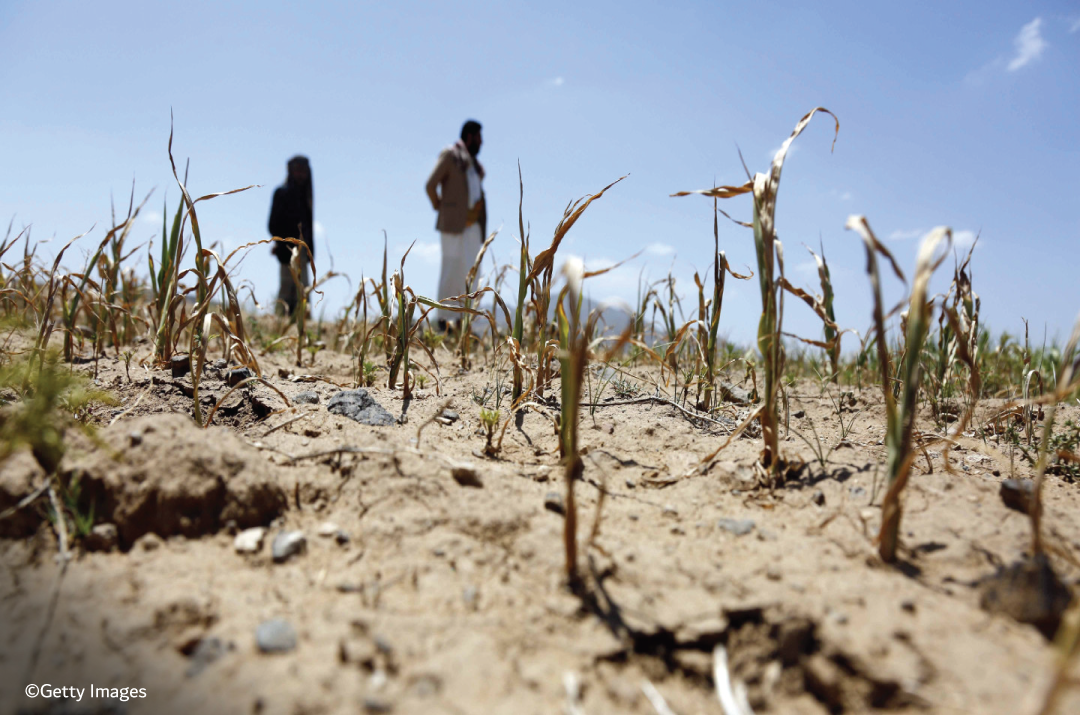
| Climate disruption intensifies the severity of droughts. It accelerates the rate of land degradation and the loss of the productive capacity of land. |
Many are unaware that the Sahara was not always the vast, arid expanse we see today. Between 11,000 to 5,000 years ago, this immense stretch of land was almost entirely covered with vegetation, teeming with life and greenery. The phenomenon of fertile lands transforming into barren deserts – known as “desertification” – is not new to Africa; it began thousands of years ago. However, as societies have developed and human activity has intensified, both factors have significantly accelerated the process of desertification in recent decades. Today, North African countries are facing an escalating environmental crisis that threatens livelihoods and endangers biodiversity.
The Sahel region is among the hardest-hit areas on the African continent. This semi-arid belt stretches from the Atlantic Ocean in the west to the Red Sea in the east, forming the southern fringe of the Sahara. Over the past few decades, particularly since the second half of the 20th century, the Sahel has witnessed a sharp increase in desertification. A series of devastating droughts has struck the region, causing the Sahara to expand by an estimated 10%.
The Roots of Desertification
Desertification in North Africa stems from a complex interplay of natural and human-induced factors. Climate change[U1] stands out as one of the most significant drivers, as the region’s climate becomes increasingly erratic, with rising temperatures and unpredictable rainfall patterns. These climate disruptions intensify drought conditions and accelerate the degradation of land, stripping it of its productive capacity.
Human activity further exacerbates the desertification crisis. Overgrazing, for instance, removes the plant cover that protects the soil from erosion. According to United Nations Environment Programme (UNEP) estimates, overgrazing accounts for approximately 58% of desertification cases across Africa. Deforestation is another major contributor to land degradation. Countries in North Africa, such as Morocco, are losing between 0.5% and 0.8% of their forests annually, according to the Global Forest Watch 2024 Report. This deforestation diminishes the soil’s ability to retain moisture and nutrients.
Unsustainable agricultural practices also play a critical role in worsening the crisis. Techniques such as deep ploughing and excessive water use contribute significantly to the issue, with estimates indicating that such practices are responsible for around 20% of desertification in the region.
Life-Altering Consequences: The Social and Economic Impact of Desertification
The impacts of desertification extend far beyond the environment, striking at the heart of North Africa’s social and economic fabric, with food insecurity and water scarcity posing serious threats to the region’s stability and long-term development.
Between 1984 and 1985, the world’s attention was grabbed by what became known in the media as the “hunger belt,” after a severe drought devastated the Sahel region. Vast swathes of land were left barren, stripped of water and vegetation. The region, covering nearly four million square kilometers and inhabited by mostly pastoralist communities, witnessed the near-total loss of its livestock. This led to a major famine that sparked global concern. The disaster marked a pivotal moment, fundamentally shifting how the international community perceived the connection between climate change and desertification.
In the years that followed, droughts became increasingly severe. Between 1968 and 1974, grazing became nearly impossible, triggering a widespread famine that prompted the first major mobilization of international humanitarian aid.
In countries like Morocco, Algeria, and Tunisia, prolonged drought periods have caused severe declines in agricultural productivity and the mass death of livestock, leaving thousands without sufficient food supplies. Over the past decade, the Middle East and North Africa (MENA) region has experienced some of the most intense droughts ever recorded. For instance, in 2023, Morocco saw a 40% drop in cereal production compared to its typical annual averages, according to reports by the Food and Agriculture Organization (FAO, 2024). This decline in food production capacity exacerbates poverty and malnutrition, deepening the cycle of scarcity and increasing the vulnerability of rural communities.
By 2050, it is projected that 100% of the MENA region’s population will be living under conditions of extreme water stress.
Loss of Biodiversity
As fertile lands degrade, ecosystems lose their ability to sustain the rich diversity of plant and animal life. Biodiversity – which once thrived across North Africa – is now facing an increasingly severe and urgent threat. Currently, more than 6,400 animal species and over 3,100 plant species across Africa are classified as endangered.
Forced Migration
Desertification is driving the displacement of rural communities. As arable land turns barren, rural populations are left with no choice but to migrate, leading to overcrowding in urban centers. By the end of 2020, more than 2.5 million people had been internally displaced across the Sahel region – a twentyfold increase in just two years. Displacement often results in inadequate living conditions, with over 75% of those affected – most of whom are women and children – lacking proper shelter, thereby increasing their vulnerability to health risks.
Economic Losses
Africa loses 3 million hectares of forest each year, resulting in a 3% reduction in its GDP due to soil and nutrient depletion. With the inevitable decline in land productivity, Africa has spent over USD 43 billion annually on food imports. Meanwhile, farmers face growing profit losses due to declining soil fertility. The widening crop yield gap caused by soil degradation is estimated to cost the continent up to USD 68 billion in losses each year.
Case Study: Tellil Forest in Sabratha – A Battle for Survival
Environmental Threat and Degradation
The district of Sabratha in Libya has witnessed a sharp decline in plant cover, particularly in Tellil Forest and Sabratha National Park, due to a combination of natural and human-induced pressures. Between 1985 and 2015, forested areas shrank dramatically, from 7.8% to just 0.8%, as a result of urban sprawl and unsustainable activities. Satellite imagery reveals that Tellil Forest, dense and vibrant in 2004, had lost much of its vegetation by 2023, making desertification a major threat to the region.
The Importance of Integrated Forest Ecosystems
Forests in Sabratha play a critical ecological and public health role. They act as natural buffers against the impacts of climate change and help preserve rich biodiversity. These green spaces provide vital breathing and recreational areas for residents, while also protecting soil integrity and conserving water resources. Moreover, forests contribute to both the physical and mental well-being of the community by offering an invigorating natural environment. However, increasing environmental and economic pressures, such as unregulated urban development and overgrazing, are now threatening this fragile ecological balance.
Environmental Response and Policies
Despite the scale of the challenges, there are domestic legal efforts aimed at forest protection, including the 1971 and 1992 environmental laws, alongside proposed constitutional provisions that guarantee environmental rights and the sustainable management of natural resources. However, these laws frequently suffer from weak enforcement and limited resources. The current environmental crisis therefore calls for a comprehensive, cross-sectoral response that brings together civil society, policymakers and environmental actors to support reforestation initiatives, strengthen environmental accountability and promote sustainable local agricultural practices.
Possible Practical Solutions
To confront the threat of desertification and restore plant cover in Sabratha, a range of effective interventions can be implemented, including:
· Launching local awareness campaigns involving schools and communities to foster a culture of forest conservation;
· Undertaking reforestation efforts using native plant species that are drought- and climate-resilient;
· Promoting green job opportunities through training in sustainable agriculture and environment-sector vocations;
· Leveraging technology to monitor environmental violations and unlawful urban expansion; and
· Supporting and incentivizing farmers who adopt eco-friendly farming methods that prevent soil degradation and protect the ecosystem.
Desertification in North Africa is a severe environmental crisis demanding immediate action. If current practices continue unchecked, more than half of the African continent’s arable land is expected to become unusable by 2050. To avert this scenario, it is imperative that governments, international organizations and local communities work collaboratively and decisively. By prioritizing environmental restoration and promoting sustainable development, North Africa can safeguard its ecosystems, ensure the well-being of its inhabitants and build a more resilient and sustainable future.
*This case study is based on information provided in a testimony submitted by Hamd Abdul Razzaq Oushah. Hamd, 28, from the city of Sabratha, is passionate about environmental protection and uses her writing to raise awareness. She works in health administration and volunteers with a non-profit organization dedicated to climate justice and youth empowerment.





Discussion
I think this has good overarching ideas
Thank you for your feedback 💚 we appreciate you taking the time to share your thoughts.